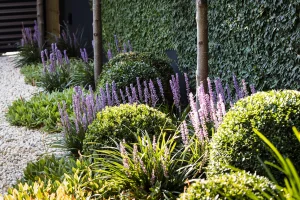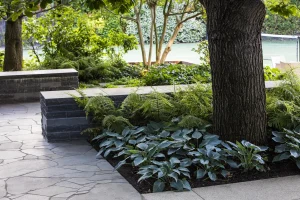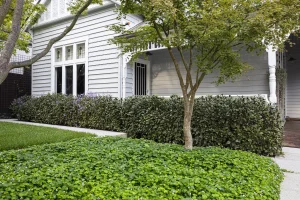Pruning is a vital aspect of gardening. It’s crucial for maintaining plant shape, promoting healthy growth and flowering, removing dead wood, and managing overall size. It’s important to remember the correct techniques to ensure your plants are set up for the most success and to keep yourself safe.
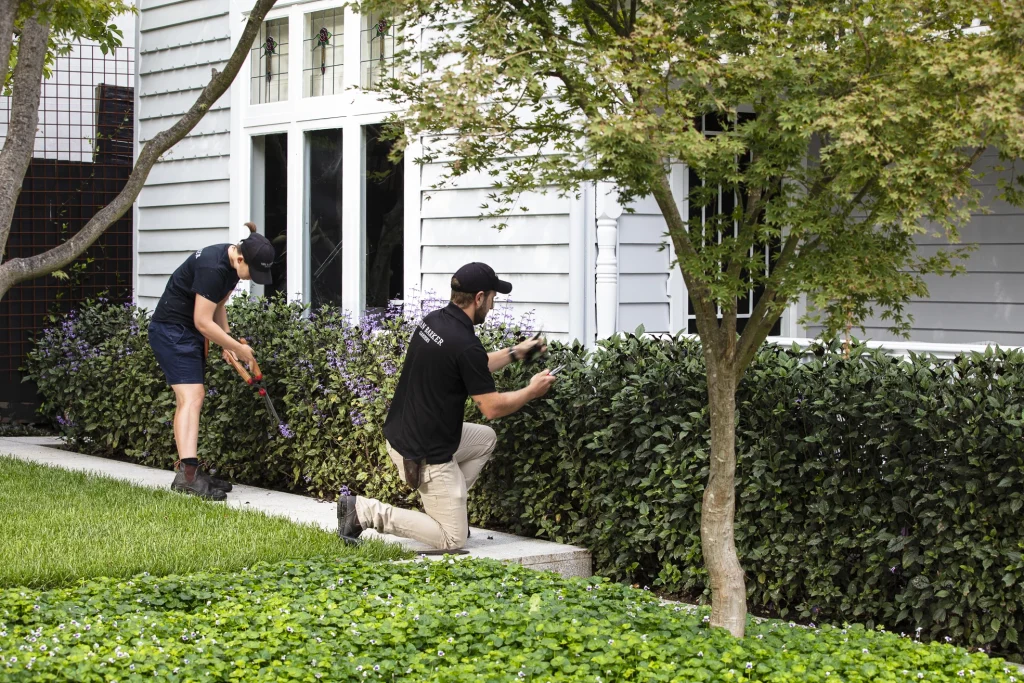
We hope our tips below will help you to feel confident pruning your garden:
Safety
- Dress Appropriately: To protect yourself while pruning, wear long pants, a sleeved shirt and non-slip shoes. Where appropriate, we also strongly encourage gloves & safety glasses subject to the plant/s being pruned.
- Maintain Tools: Ensure your pruning tools are sharp and clean. If possible, store sharp tools in protective covers. This will help significantly to extend the life of your tools.
- Use Ladders Safely: If pruning from a ladder, secure it to the tree. Keep one hand on the ladder and the other on your pruning saw. It’s also a good idea to have someone on the ground to help stabilise the ladder.
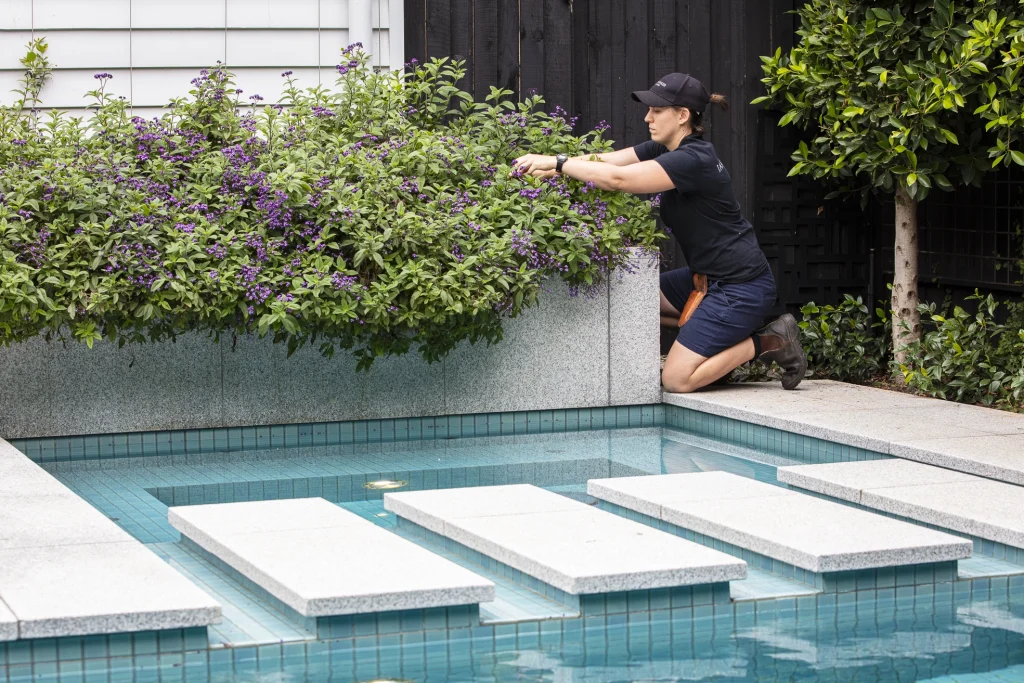
Tools
There’s a wide range of tools available for pruning, each with their own purpose and advantages:
- Secateurs: Lightweight and easy to use, secateurs are ideal for quick tasks like pruning, deadheading, cutting back perennials, and harvesting fruits and vegetables. We think of them as garden scissors—perfect for jobs that don’t require much force.
- Saws: For larger plants or branches, saws are the next step up from secateurs. They operate in a push/pull motion and are built for durability. For bigger trees, you may need a reciprocating saw or a chainsaw, depending on the size of the branches.
- Hedge Shears/Clippers: These look like oversized scissors and are designed for trimming bushes and hedges in single sweeping motions. Avoid using them on branches and stems, which can damage the blades. Electric or battery-powered shears can be especially helpful for larger areas.
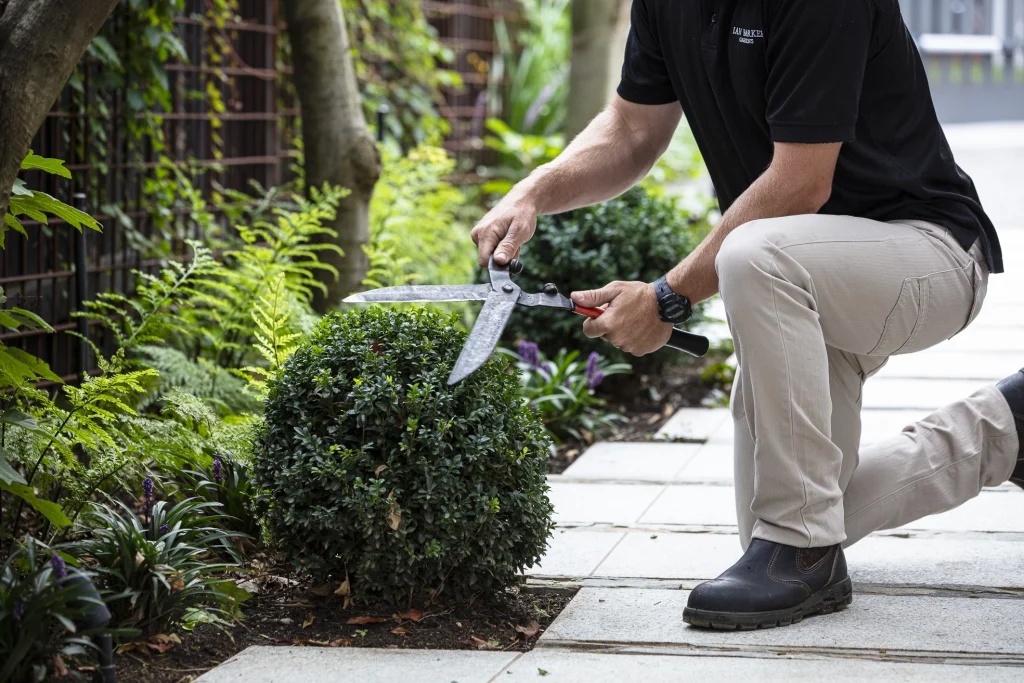
Timing and Technique
- Spring-Flowering Trees and Shrubs: Prune these right after they finish flowering in spring.
- Summer and Autumn Bloomers: For trees and shrubs that bloom during summer and into autumn, prune in late winter or early spring as soon as you see new growth.
- Avoid Autumn Pruning: Pruning in autumn can lead to new growth that winter conditions may damage.
- Late Winter Pruning: Late winter is ideal for pruning many trees and shrubs while they are dormant. This makes it easier to assess what needs to be pruned and additionally, promotes vigorous regrowth in spring.
- Dead Branch Removal: Summer is the best time to remove dead branches, due to them being more visible. However, this can be done at any time when noticed.
- Correct Cutting Angle: Mastering the proper cutting angle is crucial. We aim for a 45-degree angle just above a leaf node with a dormant bud. This angle allows water to drain off the cut, reducing the risk of disease from moisture buildup.
- After-Bloom Pruning: Pruning after blooming helps control size and improve the shape of plants. Thin out outer branches just above new growth to enhance air circulation and light penetration.
- Dead and diseased branches can be removed accordingly at any time.
As we near the end of Spring and begin easing our way into Summer, we’d suggest reviewing our Spring and Summer gardening tips.
